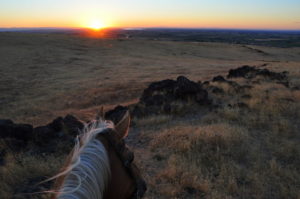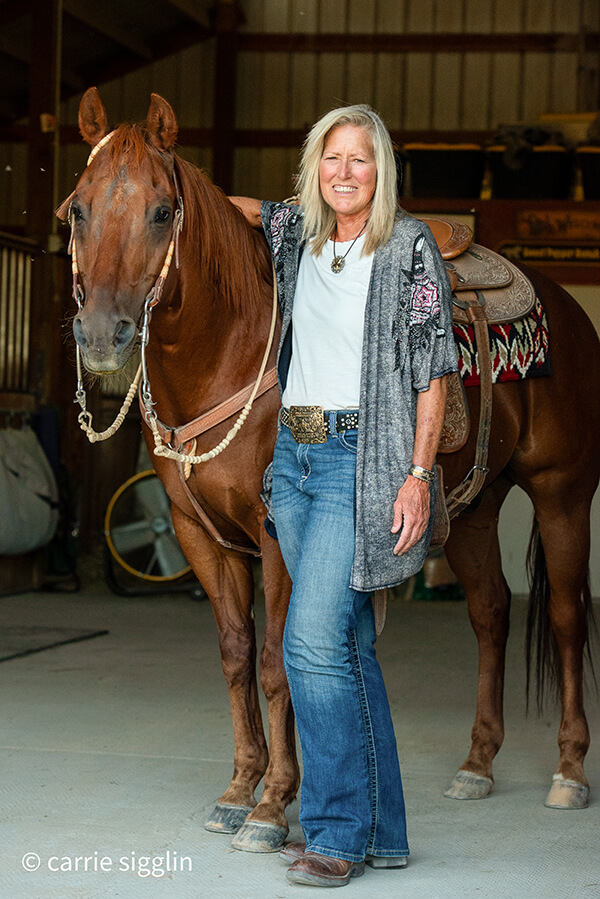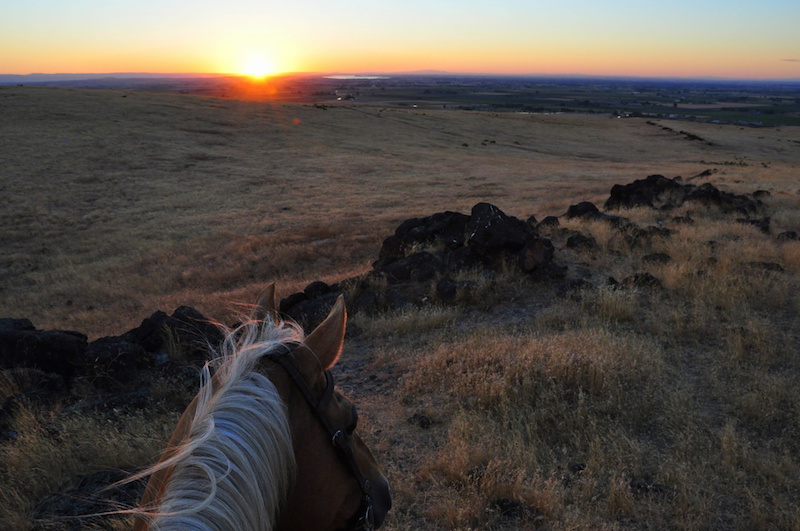Sound Management for Uncertain Times
by Alayne Blickle

A little more than a year ago, I was invited to travel to Australia to be the keynote speaker at a conference on horses and land management. One of the other speakers at that event presented material that changed some of my thinking on horse care. His presentation was on the link between climate change and infectious disease risk for horses.
Dr. Gary Muscatello, a microbiologist and faculty at the University of Sydney in their Veterinary Science Department, was the presenter. Let me summarize key points from his presentation.
World-wide when there are new disease outbreaks (human or horse) there seems to be a link between climate change and infectious disease risk. General principles of a warmer environment and changing weather patterns influence many factors which encourage disease outbreaks, disease transmission and the emergence of new diseases. Warmer temperatures enable disease-carrying organisms to extend their ranges, to have longer breeding seasons and to generally become more virulent. Animals (both domestic and wild) which already are stressed by changes (less water, hotter temps, less food availability, etc.) are now more susceptible to diseases, particularly to new diseases moving into the areas. This interaction of stressed animals and new pathogens, along with animals which are immunologically naïve, causes new disease outbreaks in horses.
Connecting the climate change dots with disease
An example in the human world is Lyme disease which in North America did not occur in Canada but now does. Birds and ticks, the carries of Lyme disease, never survived in these colder areas but with warmer temperatures they are traveling further north and the pathogens are surviving.
Climate change and equine disease
In Kentucky in 2001, the Eastern Tent Caterpillars were found to be the cause of abortions in Thoroughbred mares, called Mare Reproductive Loss Syndrome. Equine ingestion of caterpillars produced abortions and the caterpillars are associated with drought conditions, part of the climate change model. COPD, Chronic Obstructive Pulmonary Disease, associated with poor air quality and air pollution, also a part of climate change model, seems to be on the rise and is expected to continue to increase. Bacterial pneumonia, which has a big impact on foals, lives in soil and is exacerbated by dry, dusty conditions, again associated with climate change. Australia, in particular, has seen huge increases in this disease in their Thoroughbred racing industry.
Examples of other types of diseases expected to become more widespread are Pigeon Fever, a bacteria spread by midges and biting flies that live and breed in mud, and rain scald or rain rot which is caused by bacteria that thrive in a wet environment and spread around water tanks or other muddy areas.
Managing the uncertainty
The trending in climate change points to things being much different in the next 10 or 50 years. World-wide we are experiencing extreme weather events which previously occurred in 100 year cycles. Expectations are for droughts and water limitations, extreme weather patterns—monsoonal rain events, more wind, frequent flooding, cyclonic extremes like super hurricanes and super tornados and generally warmer/dryer temperatures.
These changes mean disease-carrying insects and pathogens will be flung further by strong winds and have broader ranges that are more habitable for them. It means great impacts on agriculture in general—less availability of hay and grain and associated increases in costs due to greater diseases affecting crops, etc.
What can be done?
Management is key! First, understand disease risks and what can be done to break connections. More than ever, pasture management is important to reduce bare spots and overgrazing so there’s less dust in the summer and no mud in the winter. Implement other mud management techniques to reduce habitat for disease carrying organisms such as using footing in confinement areas and gutters and downspouts on buildings. Clean waterers regularly to reduce mosquito and insect habitat. Learn and implement water conservation methods at home and on the farm or ranch. We must take action for ourselves, and our horses, to prepare for climate change.
Want to learn more? Join Horses for Clean Water and the King Conservation District at the first ever North American Conference on Climate Change and Horse Management, on April 25 at Emerald Downs Race Track in Auburn, WA. See the ad for this event on page 13 or visit the King Conservation District website at http://www.kingcd.org/ .
Published April 2014 Issue

Alayne Blickle began in the 1990’s as a pioneer in water conservation and natural resources conservation by creating the entrepreneurial consulting business, Horses for Clean Water, an award-winning internationally acclaimed education program that looks for horse-healthy, nature-based solutions to land management challenges. She continues this work today partnering with agencies, organizations, and horse owners throughout North America and worldwide. She is a regularly contributing writer and photojournalist to several equine publications.
Alayne lives with her horse trainer husband, Matt Livengood, in southwestern Idaho where they raise and train AQHA horses and mustangs on their eco-friendly horse ranch. Contact her through the Horses for Clean Water website or through their ranch website Sweet Pepper Ranch.
For more information contact Alayne at [email protected] or 206-909-0225.






